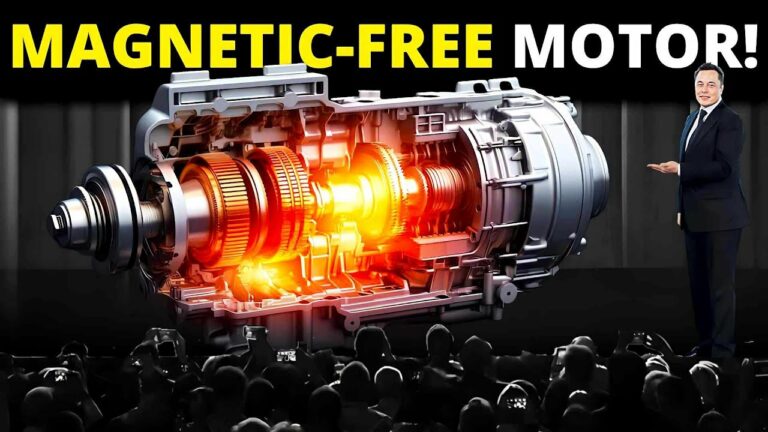Elon Musk UNVEILED A New Magnet Free Electric Motor!
The difficulty of manufacturing electric motors is equal to their amazing power. Since rare earth elements are mostly found in China, they might be challenging to obtain politically and to mine. As a result, these devices depend on magnets, which are formed of rare earth elements.
However, what if Tesla was able to produce electric motors devoid of magnets? Since civilization has progressed to the point that it can transfer power between locations without the need for physical connections, why can’t we use this knowledge in this field as well?
A minor detail in Elon Musk’s “Master Plan Part 3” made significant news in an obscure corner of physics last April at a livestreamed Tesla investor session that was heavy on grandiose storylines and little on new automobiles. Citing issues with the supply chain and the toxicity of creating them, Colin Campbell, an official in Tesla’s powertrain division, revealed that his team was removing rare-earth magnets from its motors.
Campbell flipped between two slides that discussed three unidentified compounds, so-called Rare Earths 1, 2, and 3, in order to emphasize his argument. The amounts range from half a kilogram to ten grams on the first slide, which shows Tesla’s present. Everything was zero on the next, the Tesla of the future having yet to be determined.
Neodymium was the clear choice for Rare Earth 1 according to magneticians, those who study the strange forces that some minerals exert due to electron motions and occasionally make cryptic hand signals. The metal can assist in generating a strong, constant magnetic field when combined with elements that are more often found, such as iron and boron. Nevertheless, this quality is rare in materials. Even fewer produce a field powerful enough to propel a 4,500-pound Tesla, among many other objects like industrial robots and combat jets. In the event that Tesla decided to remove neodymium and other rare earth elements from its motors, what kind of magnets would it substitute?
The scientists were certain of one thing: Tesla had not created a radically novel magnet material. “A new commercial magnet comes along only once in a hundred years or so,” remarks Andy Blackburn, executive vice president of strategy at Niron Magnetics, one of the few startups attempting to make the next big discovery.
It was more reasonable, Blackburn and other flux heads thought, that Tesla had determined it could get by with a far weaker magnet. Ferrite, a ceramic composed primarily of iron and oxygen with a small amount of a metal like strontium, was the apparent choice among the limited number of options, the majority of which were costly and politically sensitive elements like cobalt. Since the 1950s, it has prevented refrigerator doors from opening since it is inexpensive and simple to produce.
Do not forget to share your opinion with us to provide you with the best posts !




0 Comments